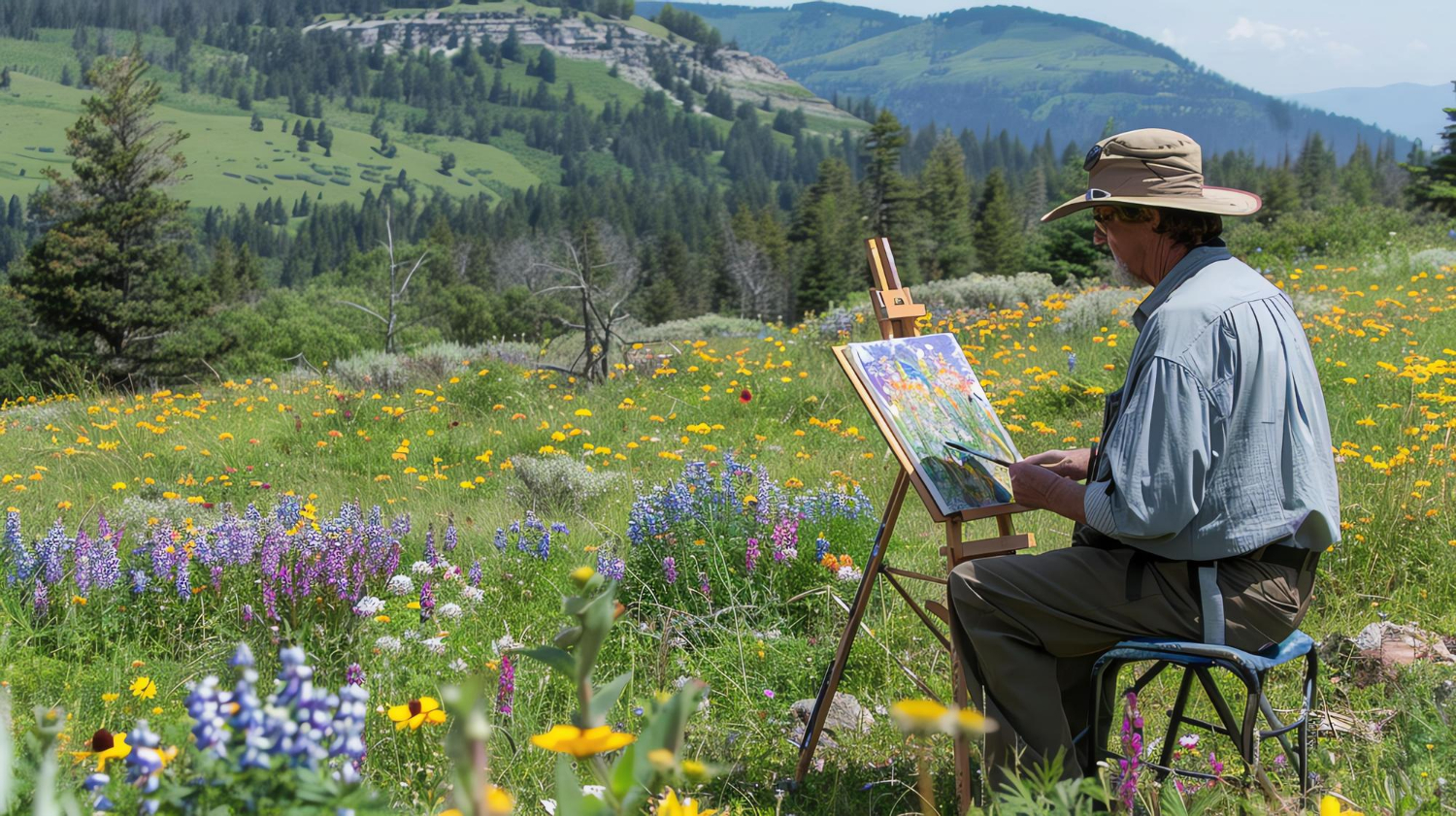The beauty of nature has always been a rich source of inspiration for artists. In contemporary British art, nature continues to play a crucial role, providing endless possibilities for creative expression. From the lush greenery of the countryside to the stunning coastlines, the natural landscape offers a wealth of themes and textures that captivate the artist’s imagination.
The connection between nature and art goes beyond mere representation. Many contemporary British artists engage with nature on a deeper level, drawing inspiration from its colours, shapes, and rhythms. Their works often reflect their personal experiences and emotional responses to the natural world. This intimate relationship with nature adds a layer of authenticity and depth to their paintings, making them resonate with viewers who share a love for the environment.
Moreover, current environmental issues also influence contemporary British artists. Concerns about climate change, pollution and conservation are reflected in their works. Artists use their creativity to raise awareness and prompt conversations about these critical topics. By doing so, they contribute to a broader dialogue about the importance of preserving our natural world.
In exploring how nature influences contemporary British artists, we can see a diverse and vibrant artistic landscape where nature’s beauty and fragility are celebrated and examined. This journey into the relationship between art and nature promises to reveal the profound ways in which the environment shapes artistic expression.
The Natural Landscape as a Muse
The natural landscape provides a rich and varied source of inspiration for contemporary British artists. The country’s diverse environments, from the rugged beauty of the Scottish Highlands to the serene beaches of Cornwall, offer endless possibilities for artistic exploration. Each region has its own unique character, and artists often capture the essence of these landscapes in their work.
For example, the Lake District’s rolling hills and tranquil lakes have inspired many artists to explore themes of peace and solitude. The vibrant colours of the autumn foliage or the dramatic skies after a storm are often seen in their paintings. These natural elements are not just backdrops but integral parts of the artwork, conveying mood and emotion.
Artists also find inspiration in less celebrated natural settings, such as urban parks or coastal marshes. These environments, though often overlooked, provide rich textures and tones that are perfect for artistic interpretation. By focusing on these everyday scenes, artists can communicate a sense of place and connect with viewers who recognise and appreciate these familiar landscapes.
Environmental Concerns in Artistic Themes
Environmental concerns are increasingly finding their way into the themes explored by contemporary British artists. The impact of climate change, pollution, and habitat destruction is a significant source of anxiety and motivation for many. By addressing these issues in their work, artists aim to raise awareness and provoke thought.
One common theme is the depiction of endangered landscapes and species. Artists paint scenes that highlight the fragility of ecosystems and the urgent need for conservation. These works often feature stark contrasts between the natural beauty of the subjects and the looming threats they face. This duality can be a powerful way to engage viewers and encourage them to consider their role in protecting the environment.
Recycling and sustainable practices also play a role in their artistic themes. Some artists use reclaimed materials to create their works, turning discarded objects into meaningful art. This approach not only reduces waste but also adds a layer of commentary on consumption and the importance of reusing resources.
By incorporating environmental themes into their art, contemporary British artists contribute to the global dialogue on ecological sustainability. Their works serve as a reminder of the beauty of nature and the urgency of preserving it for future generations.
Techniques for Capturing Nature’s Essence
Capturing the essence of nature in art requires a variety of techniques that can vary greatly among contemporary British artists. Some prefer traditional methods, while others experiment with newer approaches to bring their visions to life. The techniques they use often reflect their personal connection to the natural world.
One popular technique is plein air painting, where artists work outdoors to capture the immediate impressions of their surroundings. This method allows them to directly interact with the landscape, capturing the changing light, colours, and moods in real time. The spontaneity of plein air painting can result in works that feel vibrant and alive.
Another technique involves the use of texture to convey the tactile qualities of nature. Artists might use thick applications of paint, known as impasto, to recreate the rugged surface of a tree bark or the roughness of a rocky shore. This technique adds depth and dimension to their work, making the natural elements almost palpable to the viewer.
Some artists also employ abstraction to distil the essence of nature. By focusing on shapes, colours, and patterns rather than detailed representations, they can evoke the spirit of a landscape or a natural phenomenon. This approach allows for a more emotional and personal interpretation of nature, connecting with viewers on a deeper level.
Prominent Contemporary British Artists Inspired by Nature
Several prominent contemporary British artists draw their inspiration directly from nature. These artists have made significant contributions to the art world with their unique interpretations of the natural environment.
David Hockney is one such artist whose vibrant landscapes capture the beauty of the British countryside. His works often feature bold colours and dynamic compositions that reflect his deep appreciation for nature. Hockney’s paintings of the Yorkshire landscapes are particularly renowned, showcasing his ability to capture the region’s changing seasons and moods.
Another notable artist is Andy Goldsworthy, who creates site-specific sculptures using materials found in nature. His works, often temporary, highlight the impermanence and beauty of the natural world. By using leaves, stones, and ice, Goldsworthy’s sculptures blend seamlessly with their surroundings, offering a unique perspective on nature’s fleeting beauty.
Additionally, artist Maggi Hambling is well-known for her expressive seascapes. Her paintings of the sea are filled with energy and movement, reflecting both the power and serenity of the ocean. Hambling’s works often convey a deep connection to the natural world, inviting viewers to experience the majesty of the sea through her eyes.
Final Thoughts
Nature continues to be a powerful source of inspiration for contemporary British artists. Through their diverse techniques and themes, they capture the beauty, complexity, and fragility of the natural world. These artists remind us of the importance of nature in our lives and the need to preserve it for future generations.
At White Court Art, we are proud to showcase the works of artists deeply inspired by nature. Their art not only reflects their personal connections to the environment but also invites us to see the world through their eyes.
Explore our collection to discover the beauty of contemporary British art and bring the essence of nature into your home. Visit White Court Art today and find the perfect piece that resonates with your love for the natural world.

